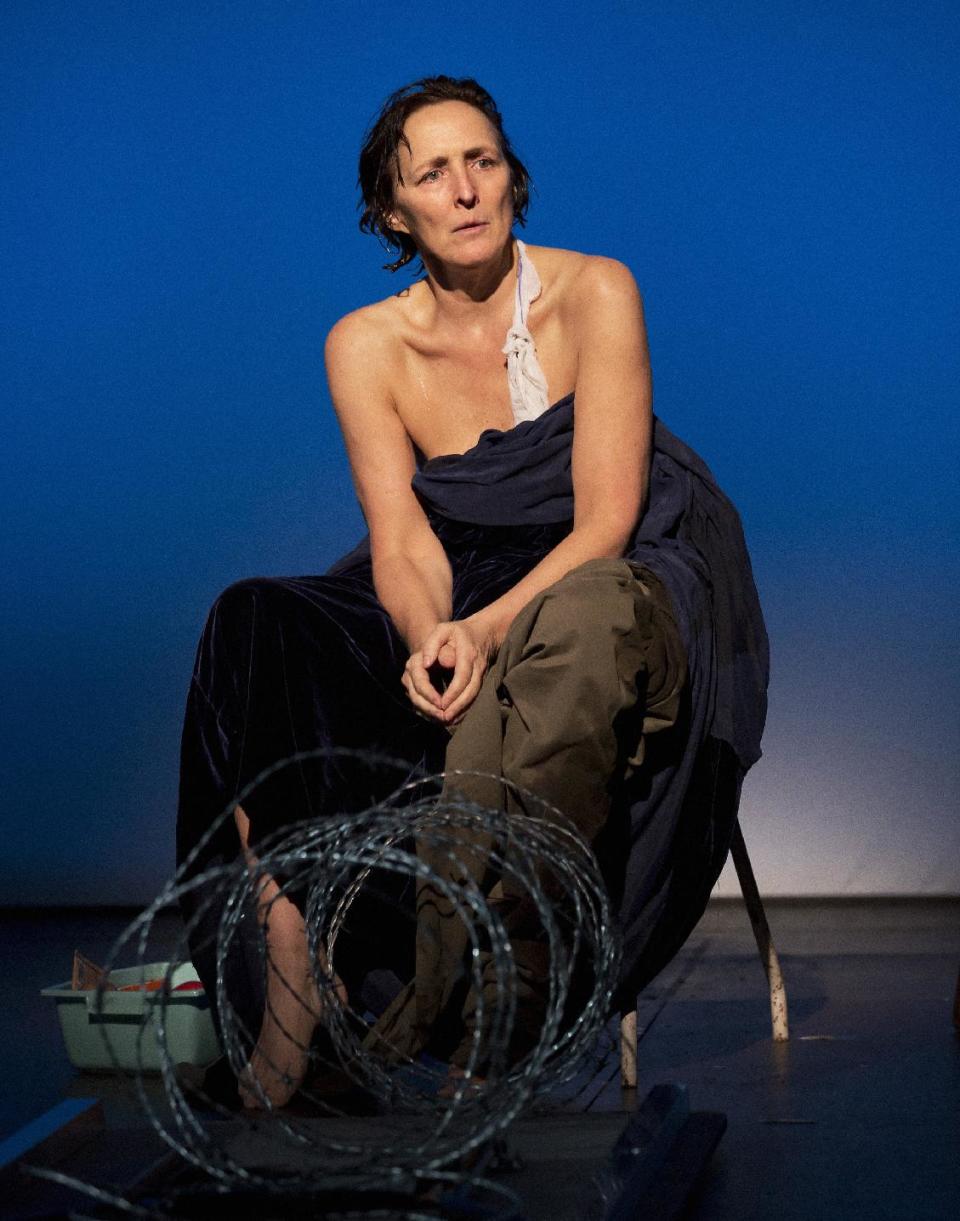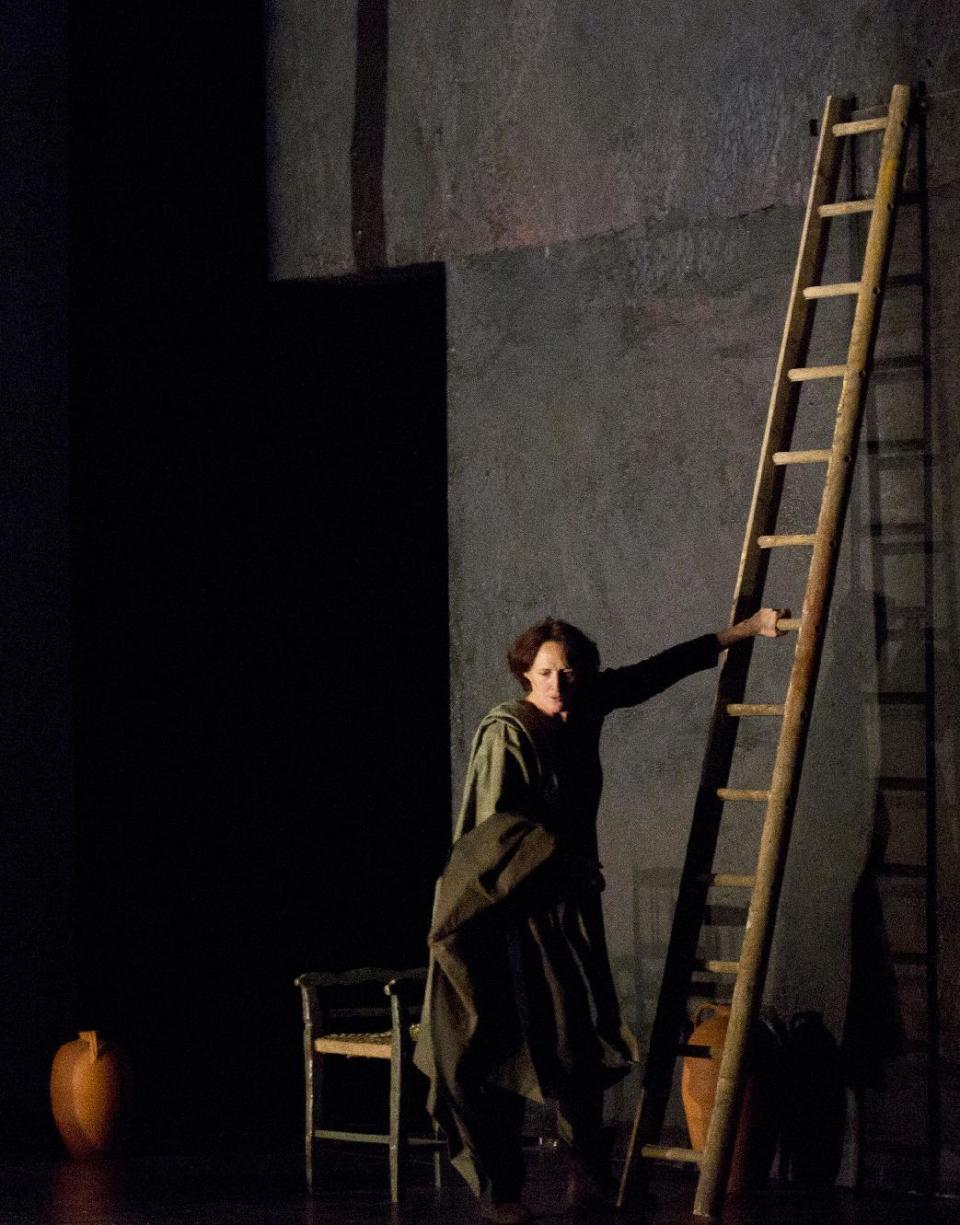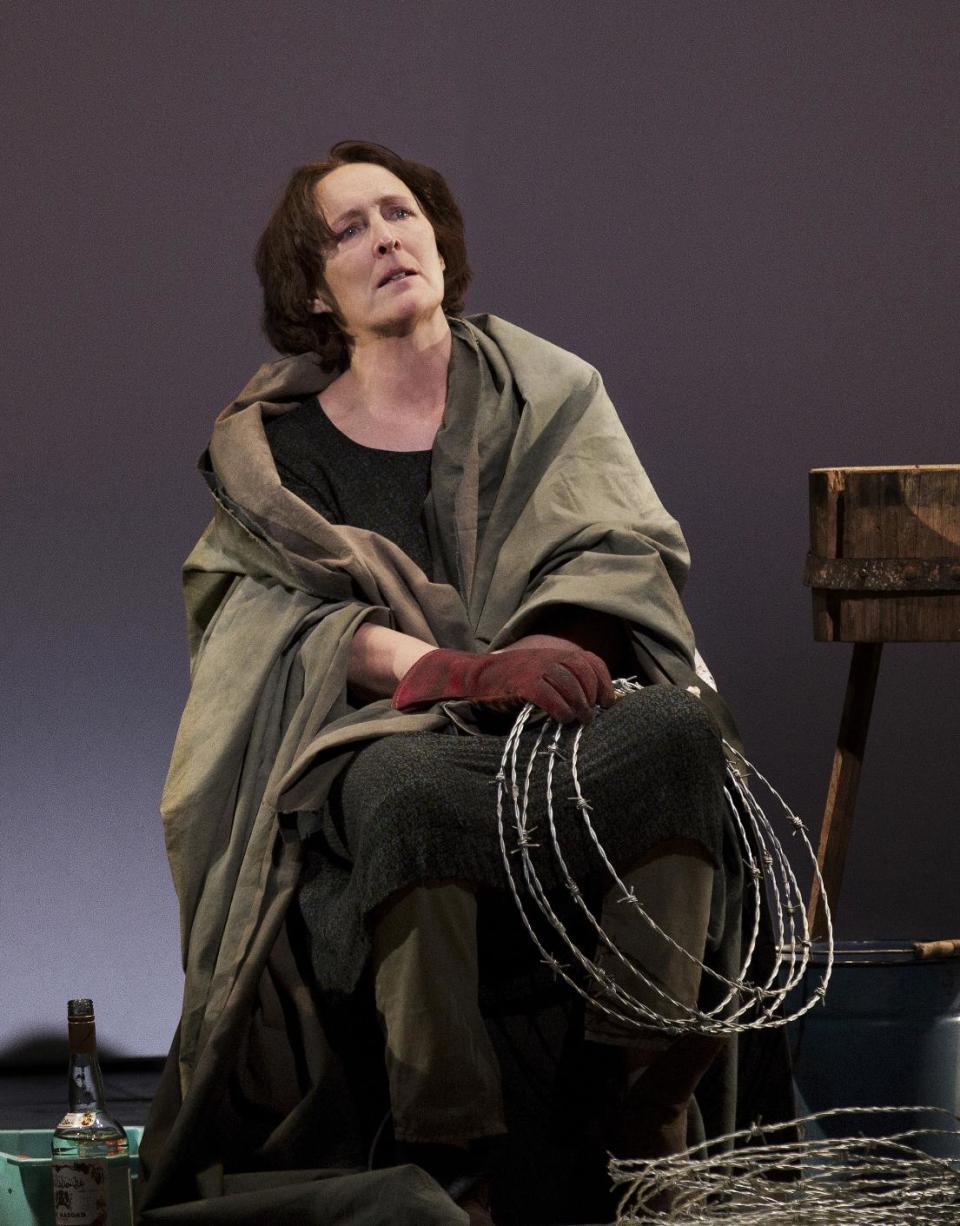Review: There's something (weird) about Mary
NEW YORK (AP) — If every mother secretly believes her son is a saint, you'd have to imagine the Virgin Mary would be positively insufferable.
But she isn't in Colm Toibin's thrilling, idiosyncratic imagining of Mary's life after her son's death. The one-woman show, "The Testament of Mary," opened Monday at the Walter Kerr Theatre starring Fiona Shaw — sharing the stage with a live vulture — and taking big bites out of the New Testament.
This is a bold work, one that portrays Mary as a critic of what will eventually emerge as Church orthodoxy. She thinks Jesus' friends were a bad influence, doubts his divine powers and ultimately doesn't believe his crucifixion was worth it.
"Gather together misfits, I said, and you will get recklessness, ambition, anything at all, and it will lead to what I saw, to the worst sort of catastrophe," she says.
If you do not want to see Mary with an unlit cigarette cradling a bottle of booze while splayed out on a table, this may not be the play for you. If you don't want your Mary naked, move along. Opening night had protesters outside the theater.
In a gentle Irish accent, Shaw is at turns mournful and at others table-flipping angry. Director Deborah Warner, a frequent Shaw collaborator, puts the actress on the constant move — nervously cleaning, rearranging furniture and even diving into a small pool onstage. This Mary is prone to menacing anger and sharp screams, suffering from simmering trauma and guilt.
In a season of one-man shows on Broadway — Bette Midler, Alan Cumming, Holland Taylor and Mike Tyson — Shaw may have one of the more controversial, rolling her eyes at apostles and dismissing them as if they were weirdoes her son met smoking funny cigarettes at Bonnaroo. She also must reveal a mother's horrific anguish at watching the brutal death of her son. Shaw is up to the task for both, even if the production seems littered with half-baked ideas.
We meet her Mary years after the death of Jesus as she is being watched and lobbied to accept church doctrine from "my minders, my guards." ("They want to make what happened live forever," she mocks.) But she refuses to play along.
Mary recounts three major events — the wedding at Cana, where Jesus turned water into wine, Lazarus' rising from the dead and the crucifixion, which Mary watched but fled before the end. Toibin's text is lyrical and paranoid, offering in just 90 minutes a glimpse of a mother's alienation from history, from, in fact, The Greatest Story Ever Told.
At Cana, her son is like a stranger, "oddly formal and grand," who seems to perform a wine-based party trick in front of drunks. As for the risen Lazarus, Mary sees in the "miracle" just a sad, whimpering creature who can eat only bread soaked in water and shuffle sadly. She reminds us that he will have to die twice.
Often, this is a Virgin Mary as hard to pin down as the time frame, although we are told the setting is "now" in the Playbill. She switches in and out of nondescript tunics and dresses designed by Ann Roth, getting more modern as she goes until she's in just a white T-shirt and slacks. Along the way, Shaw uses shawls and bolts of fabric to recreate the kinds of poses in which Mary has been imagined in classic paintings.
The stage that set designer Tom Pye has decorated includes a metal folding table you might find at a Target, a ladder, a few cane chairs, barbed wire, a gorgeous bush sculpted from metal, a birdcage and a stunning wooden bird pole, though the vulture that had been onstage before the curtain was nowhere to be found during one preview.
The audience is invited to wander around onstage before the show and have a close-up look at Pye's work, including peering into a subterranean basement and at the scraps of paper Mary waves about. Shaw, meanwhile, is in a glass box murmuring before the show starts, an apparent nod to Marian statues.
But the combined effect of all this stuff is faint indeed, a playful obliqueness that seems somewhat pointless. It's as if the creators didn't trust Mary's story to be riveting enough so they littered the stage with distractions.
The use of a yellow-headed vulture, named Pinhead, and Mary's plunge into a bath are over-the-top touches. Mary also refuses to say her son's name, a coyness that grows irritating. And an unwillingness to ground this Mary in any time or place is understandable but misses the chance to make a fully fleshed person, despite Shaw's obvious theatrical gifts.
___
Online: http://testamentonbroadway.com




